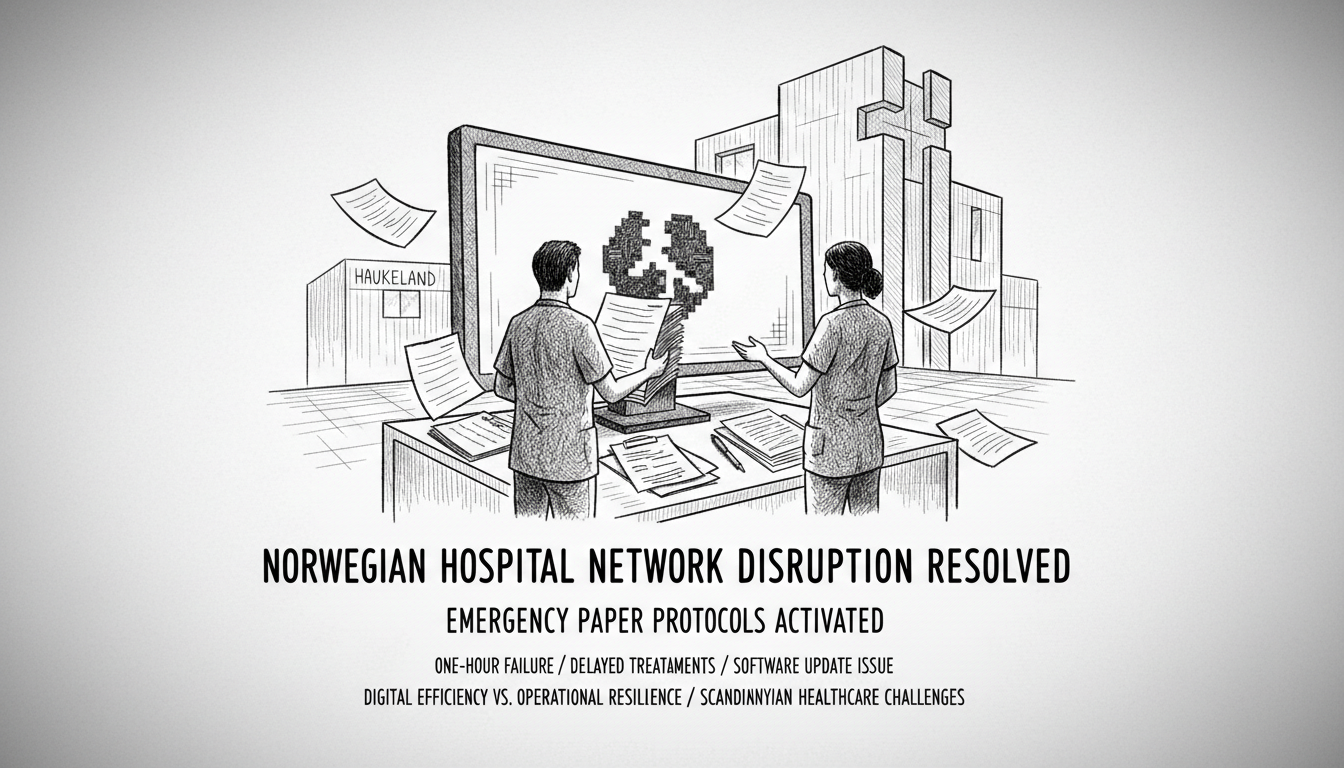Haukeland University Hospital in Bergen activated emergency paper-based procedures following a major network failure on Monday afternoon. The disruption lasted approximately one hour before technical teams restored digital systems. Hospital officials confirmed some patient treatments experienced delays during the transition to manual protocols.
Communications director Eirik Vigander stated the incident resulted from a problematic software update deployed by regional health authorities. Technical staff identified the issue quickly and implemented corrections within sixty minutes. The hospital has now returned to normal digital operations according to official statements.
This incident highlights the vulnerability of Norway's advanced healthcare infrastructure to technological failures. As one of Scandinavia's largest medical facilities, Haukeland serves the entire western region and maintains specialized national treatment programs. Any disruption to its digital systems immediately impacts patient care coordination and medical data accessibility.
Norway's healthcare system has invested heavily in digitalization over the past decade, making network reliability critical for daily operations. The country's dispersed population and challenging geography make centralized digital systems essential for coordinating care across fjords and mountainous regions. When these systems fail, hospitals must revert to paper-based methods that slow treatment documentation and inter-department communication.
The temporary shutdown demonstrates how even brief technical problems can disrupt complex medical workflows. Norway's health authorities continue balancing digital efficiency with operational resilience. This balance remains particularly important in remote regions where alternative facilities may be hours away by road or ferry.
Healthcare technology infrastructure represents a growing concern within Norwegian public administration. Parliament members have previously questioned whether backup systems receive adequate testing and funding. This incident will likely renew discussions about redundancy measures within the Storting's health committee.
Bergen residents rely heavily on Haukeland for specialized medical services unavailable elsewhere in western Norway. The hospital's location between the Sørfjorden and Byfjorden makes it accessible to coastal communities but also concentrates regional healthcare dependency. Any operational disruption affects patients traveling from surrounding islands and fjord settlements.
Norwegian hospitals generally maintain high digitalization standards compared to international peers. This makes them both efficient and potentially vulnerable to technical failures. The swift resolution at Haukeland demonstrates competent crisis management, but the incident itself reveals systemic risks within increasingly automated healthcare delivery.

